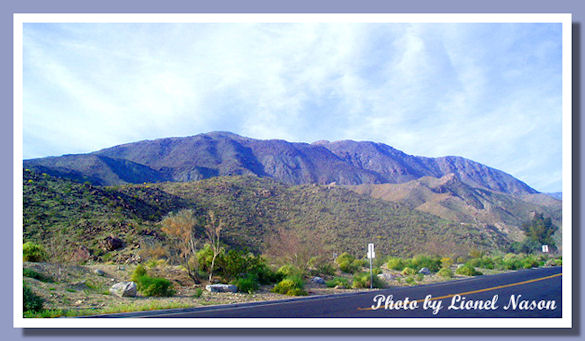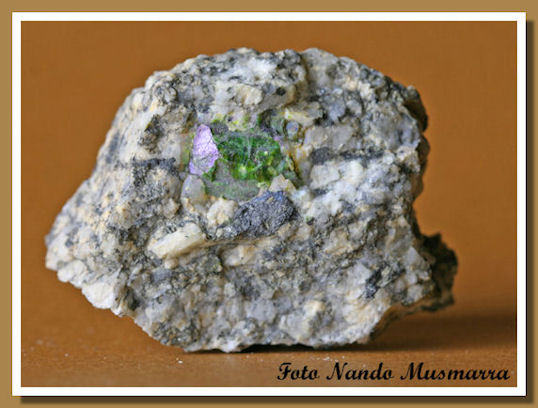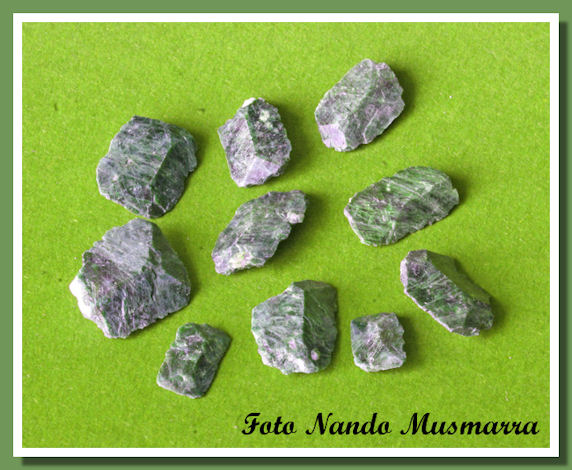Titanite Crystals from the Mirage Trail, Rancho Mirage, Riverside County, California
Non lontano dalla elegante città di Palm Springs, precisamente a Rancho Mirage, Riverside County, California, è possibile visitare un affioramento di interessanti cristalli di titanite. La località è facilmente raggiungibile grazie ad un sentiero attrezzato per la visita alle incantevoli Santa Rosa mountains. In questo articolo viene riportato uno studio su questi cristalli. La località è 9 miglia a nord di Deep Canyon, un altro sito dove nel 1939 R.W. Webb pubblicò il primo resoconto sui cristalli di titanite. Nell'articolo vengono comparati i cristalli di titanite delle due località. Ho avuto l'occasione di accompagnare lo scopritore del sito, Ed Wilson, durante un'escursione per il prelievo dei campioni. I cristalli hanno delle belle sfumature verdi e si possono trovare sia sciolti che su matrice. Considerata la disarmante bellezza dei luoghi, si raccomanda di ridurre al minimo le tracce del proprio passaggio.

Quarterly Volume 44, Number 1, Winter 1997
San Bernardino County Museum Association
2024 Orange Tree Lane, Redlands, CA 92374
Anthony R. Kampf, Mineral Sciences Section, Los Angeles County Museum of Natural History, 900 Exposition Blvd., Los Angeles, CA 90007
Edward C. Wilson, 71624 Biskra Road, Rancho Mirage, CA 92270
George R. Rossman, Division of Geological and Planetary Sciences, California Institute of Technology, Pasadena, CA 91125
In 1939, Robert W. Webb published the first report and description of euhedral titanite (sphene) crystals occurring in the granodiorite in the San Jacinto Mountains. This occurrence, commonly referred to as the Deep Canyon titanite locality, is actually in the Santa Rosa Mountains immediately northwest of Deep Canyon and east of Pinyon Flat along the Palms-to-Pines Highway (CA 74). Subsequently, other workers have noted titanite as a widely distributed accessory in the granodiorites and related rocks of the northern Santa Rosa Mountains, locally making up 5% or more of the rocks and reaching 5 cm in length (Sims, 1961; Lockwood, 1961).
Reported herein is a newly recognized occurrence of titanite crystals along the Mirage Trail, a public hiking trail traversing the eastern end of a ridge on the south side of Magnesia Falls Cove, city of Rancho Mirage, Riverside County, California. This area is in the foothills of Haystack Mountain, northern SANTA ROSA Mountains, The Mirage Trail, which is within the Santa Rosa Mountains National Scenic Area, begins at the west end of Magnesia Falls Drive and continues south and uphill for about a mile. Most of the trail is contained within the SE 1/4 of sec. 13 and the NE 1/4 of sec. 24, T. 5 S., R. 5 E., Rancho Mirage quadrangle. This locality is approximately 9 miles due north of the Deep Canyon locality.

The titanite occurs as an accessory mineral in a gneissic granodiorite that appears to be closely related to the granodiorite hosting the titanite at the Deep Canyon locality. Lockwood (1961) refers to this rock as Pinyon Flats type granodiorite. Besides titanite, the rock consists principally of andesine, orthoclase, quartz, hornblende, and tiotite, with minor magnetite. The gneissic foliation of the rock is most noticeably produced by oriented prismatic hornblende. Epidote is found as an alternation produce of the andesine. Along the Mirage Trail small, irregular, lens-shaped, pegmatitic segregations are widely distributed in the granodiorite. Where titanite crystals occur in these segregations, they tend to be somewhat larger and more distinctly crystallized than elsewhere in the granodiorite. Titanite crystals are also found in the soil derived from the granodiorite.
The mirage Trail titanite crystals are similar in size and morphology to those from the Deep Canyon occurrence. They are invariably euhedral sharp-edged tablets with simple morphology dominated by the forms a(100) and n(111) with smaller c(001) and x(102) and rare m(110). most crystals range in length from 1 to 3 cm and incolor from apple green to olive green in daylight, appearing browner in incadescent light. By contrast, orange-brown coloration in both daylight and incandescent light is characteristic of the crystals from Deep Canyon. Crystals from both localities are highly fractured and heavily included. Under magnification, small cleal areas in Mirage Trail titanite are pleochroic with dominant deep amber color. The green color appears concentrated along fractures in the crystals and may be due to alteration product such as epidote. Titanites from both localities exhibit weak but detectable radioactivity. The amber/brown color is attributable, at least in part, to radiation damage.

Electron microprobe and X-ray fluorescence analyses of Mirage Trail titanite were compared to an electron microscope analysis by L. Peter Gromet (1979)( and a recently acquired XRF analysis of the Deep Canyon material. Both contain iron and aluminum as substantial minor components. (Mirage Trail titanite was not analyzed for fluorine, a minor component in the Deep Canyon material). Significant trace elements of manganese and cerium, and lesser trace amounts of other rare earth elements as well as barium, zirconium, uranium, and thorium were detected in titanite from both localities. Analyzed titanites from the two localities show nearly identical minor and trace element compositions with the exception of uranium, which is about a factor of 5 times higher in the Mirage Trail material.
Si ringraziano:
Jennifer Reynolds, San Bernardino County Museum Association e gli autori Anthony R. Kampf e Edward C. Wilson per il permesso alla pubblicazione dell'articolo; Lionel Nason per le fotografie.
I diritti dell'articolo sono del © San Bernardino County Museum
http://www.co.san-bernardino.ca.us/museum/media/publicat.htm
L'introduzione è di Diana Fattori